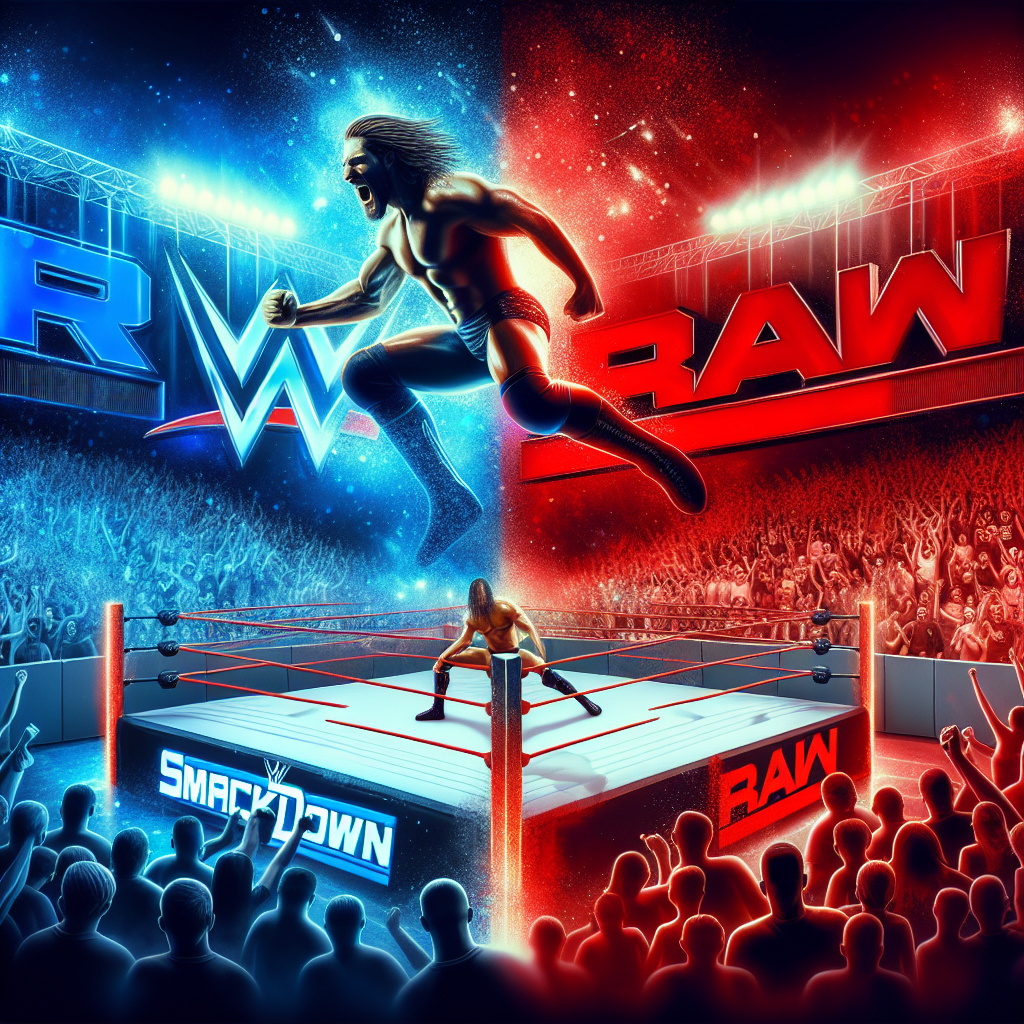WWE Raw and SmackDown: A Comprehensive Overview

World Wrestling Entertainment (WWE) has been a cornerstone of sports entertainment for decades, captivating audiences with its blend of athleticism, drama, and storytelling. Among its flagship programs, WWE Raw and SmackDown stand out as the most prominent weekly shows, each with its unique flavor and history. This article delves into the intricacies of WWE Raw and SmackDown, exploring their evolution, key differences, and impact on the wrestling industry.
The Origins of WWE Raw and SmackDown
WWE Raw: The Beginning
WWE Raw, also known as Monday Night Raw, debuted on January 11, 1993. It was a revolutionary concept at the time, offering a live, weekly wrestling show that brought the excitement of WWE directly into the homes of fans. The show quickly became a staple of Monday night television, known for its unpredictable nature and high-energy matches.
Raw’s inception marked a significant shift in how wrestling was presented on television. Prior to Raw, wrestling shows were often pre-taped and lacked the immediacy and excitement of live broadcasts. Raw changed that by offering a live format that allowed for real-time audience interaction and spontaneous storytelling.
SmackDown: A New Era
WWE SmackDown premiered on April 29, 1999, as a complement to Raw. Initially airing on Thursday nights, SmackDown provided WWE with an additional platform to showcase its talent and storylines. The show was named after The Rock’s famous catchphrase, “Lay the SmackDown,” and quickly established its identity as a distinct brand within WWE.
SmackDown’s introduction allowed WWE to expand its storytelling capabilities, offering fans more content and opportunities to engage with their favorite superstars. Over the years, SmackDown has moved to different nights and networks, but it has consistently remained a key component of WWE’s programming.
Key Differences Between Raw and SmackDown
Brand Identity and Roster
One of the most significant differences between Raw and SmackDown is their brand identity and roster composition. While both shows feature WWE’s top talent, they often have distinct rosters, which are determined by the WWE Draft. This separation allows each show to develop its unique storylines and rivalries.
- Raw: Known for its longer runtime (typically three hours), Raw often features more in-depth storylines and character development. It is considered the flagship show of WWE and often hosts major events and announcements.
- SmackDown: With a two-hour format, SmackDown is known for its fast-paced action and focus on in-ring competition. It often highlights emerging talent and provides a platform for wrestlers to showcase their skills.
Broadcasting and Production
Raw and SmackDown also differ in terms of broadcasting and production. Raw has traditionally aired on the USA Network, while SmackDown has moved between various networks, including UPN, The CW, Syfy, and Fox. These differences in network partnerships have influenced the production style and presentation of each show.
SmackDown’s move to Fox in 2019 marked a significant milestone, as it brought WWE programming to a major broadcast network, increasing its visibility and reach. This move also led to changes in production values, with SmackDown adopting a more polished and mainstream presentation.
The Impact of Raw and SmackDown on WWE and Wrestling Culture
Shaping Wrestling Storylines
Raw and SmackDown have played pivotal roles in shaping wrestling storylines and character arcs. The weekly format allows for ongoing narratives that can span months or even years, creating a rich tapestry of interconnected stories. This storytelling approach has been instrumental in building iconic rivalries and memorable moments in wrestling history.
For example, the “Stone Cold” Steve Austin vs. Vince McMahon feud, which unfolded primarily on Raw, is considered one of the greatest storylines in wrestling history. Similarly, SmackDown has been the stage for legendary rivalries such as The Undertaker vs. Edge and the rise of superstars like John Cena and Roman Reigns.
Influence on Pop Culture
Beyond the wrestling ring, Raw and SmackDown have had a significant impact on pop culture. WWE superstars have become household names, transcending the world of wrestling to appear in movies, television shows, and other media. The shows themselves have been referenced in various forms of entertainment, further cementing their place in popular culture.
The Rock, who gained fame on both Raw and SmackDown, is a prime example of a WWE superstar who successfully transitioned to mainstream stardom. His catchphrases and persona have become ingrained in pop culture, demonstrating the far-reaching influence of WWE programming.
Case Studies: Memorable Moments from Raw and SmackDown
Raw: The Pipe Bomb
One of the most memorable moments in Raw history occurred on June 27, 2011, when CM Punk delivered his infamous “pipe bomb” promo. Breaking the fourth wall, Punk aired his grievances with WWE management and the wrestling industry, blurring the lines between reality and fiction. This promo resonated with fans and is often credited with sparking a renewed interest in WWE programming.
SmackDown: The Debut of The Shield
On November 18, 2012, at the Survivor Series pay-per-view, The Shield—comprising Dean Ambrose, Seth Rollins, and Roman Reigns—made their impactful debut by interfering in the main event. Their subsequent appearances on SmackDown helped establish them as a dominant force in WWE, leading to one of the most successful factions in wrestling history.
The Future of Raw and SmackDown
Adapting to Changing Audiences
As WWE continues to evolve, Raw and SmackDown face the challenge of adapting to changing audience preferences and viewing habits. The rise of digital streaming platforms and social media has transformed how fans consume content, prompting WWE to explore new ways to engage with its audience.
Both shows have embraced digital platforms, offering highlights and exclusive content on YouTube, WWE Network, and Peacock. This approach allows WWE to reach a global audience and cater to fans who prefer on-demand viewing.
Innovations in Storytelling
Looking ahead, Raw and SmackDown are likely to continue innovating in terms of storytelling and presentation. WWE has experimented with cinematic matches and unique production techniques, such as the “Firefly Fun House” match and the “Boneyard Match,” which received critical acclaim for their creativity.
These innovations demonstrate WWE’s commitment to pushing the boundaries of traditional wrestling programming and exploring new ways



0 Comments